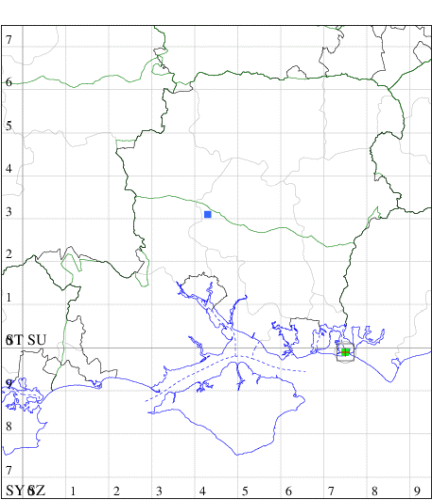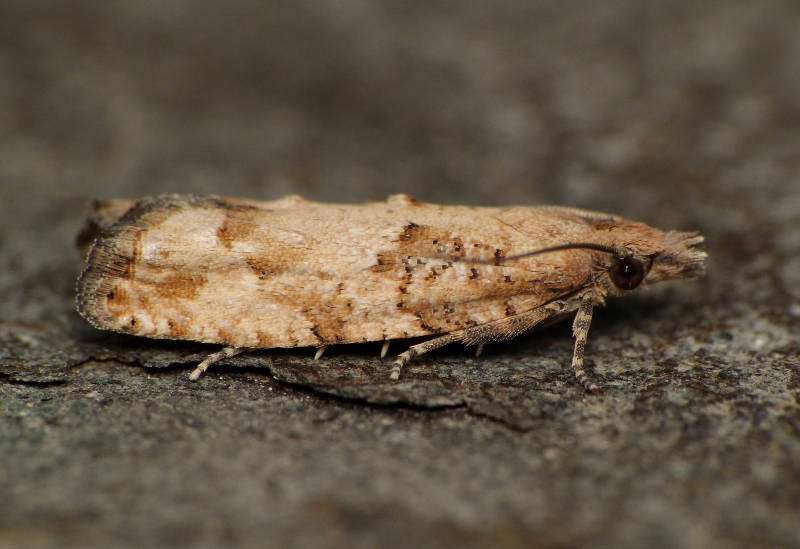Acroclita subsequana
Checklist Number49.226 [B&F: 1160]
Verification
Record will require further evidence, at least a good photograph, unless CMR is aware recorder has confidence in identification
Classification
| Family: | Tortricidae |
| Subfamily: | Olethreutinae |
| Genus: | Acroclita |
| Species: | subsequana |
| Authority: | (Herrich-Schäffer, 1851) |
Endangered (proposed as a future Red Data Book species) on shingle beaches and sandy beaches in parts of southern England, predominantly coastal. In Hampshire following old records from southern Hampshire, nothing more was heard of this moth until larvae were found at Sandy Point on Hayling Island in June 1996. Not recorded from the Isle of Wight to date. Wingspan 14-16 mm. The pale ochreous ground colour and the tawny markings of the forewing, which are only slightly darker and do not contrast strongly, give this species a characteristic appearance; the two small tufts of raised black mixed with whitish scales on the outer edge of the basal patch are a useful diagnostic character [Bradley]. Larva feeds on Sea Spurge and Portland Spurge, living between leaves and shoots spun together with silk, over-wintering in a cocoon.


The abundance in each month is indicated as follows:
 No records
No records Very occasional
Very occasional Irregular
Irregular Uncommon
Uncommon Off-peak, but not unusual
Off-peak, but not unusual Off-peak, but not unusual
Off-peak, but not unusual Main flight time
Main flight time| J | F | M | A | M | J | J | A | S | O | N | D | |
|---|---|---|---|---|---|---|---|---|---|---|---|---|
| Adult |  |  |  |  |  |  |  |  |  |  |  |  |
| Larval |  |  |  |  |  |  |  |  |  |  |  |  |
Records by week (adult)
Records by week (larval)
VC11 South Hampshire
| Site | Date | Quantity | Recorder | Stage |
|---|---|---|---|---|
| Sandy Point LNR (SZ79) | 24/06/1995 | 10 | David Appleton | Larval |
| Sandy Point LNR (SZ79) | 17/02/1996 | one | David Appleton | Larval |
| Hayling Island (SZ79) | 16/05/2007 | - | Phil Budd | - |
| Hayling Island (SU70) | 28/09/2018 | - | Seth Gibson | Adult |
| Sandy Point NR, Hayling Island (SZ79) | 03/10/2023 | one | Tony Davis | Larval |
| Sandy Point NR (SZ79) | 20/09/2024 | - | Tony Davis | Larval spinning |

.jpg)
